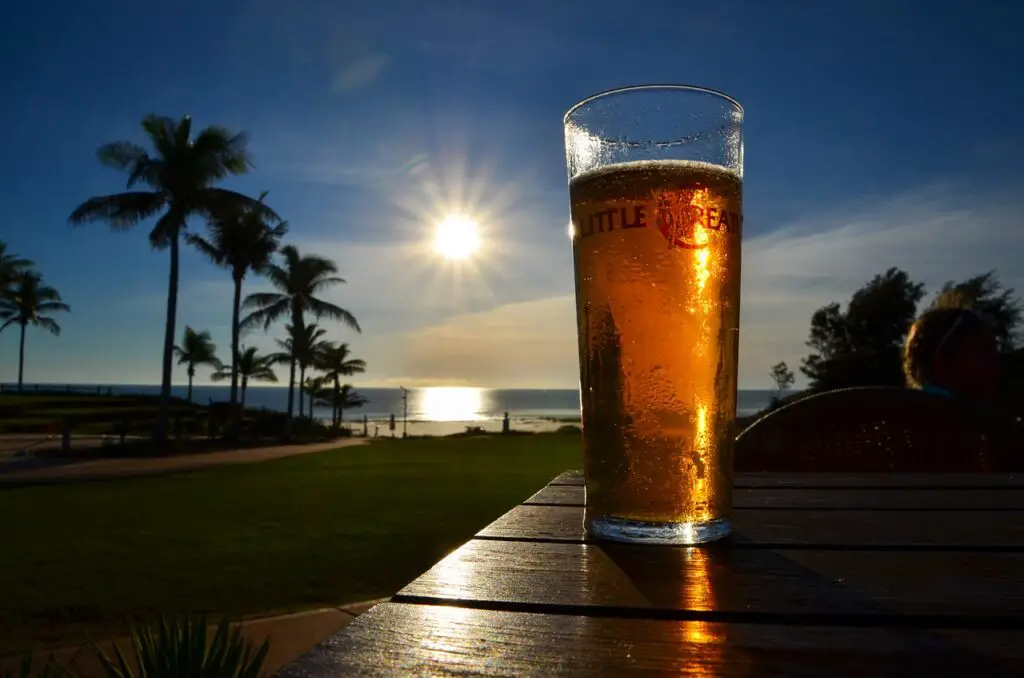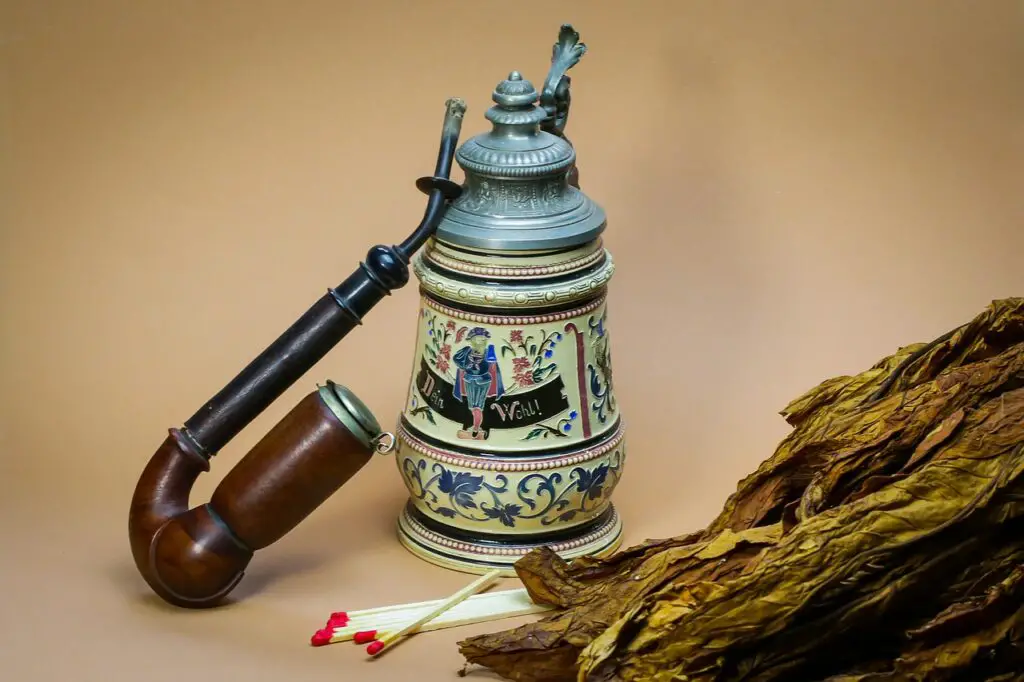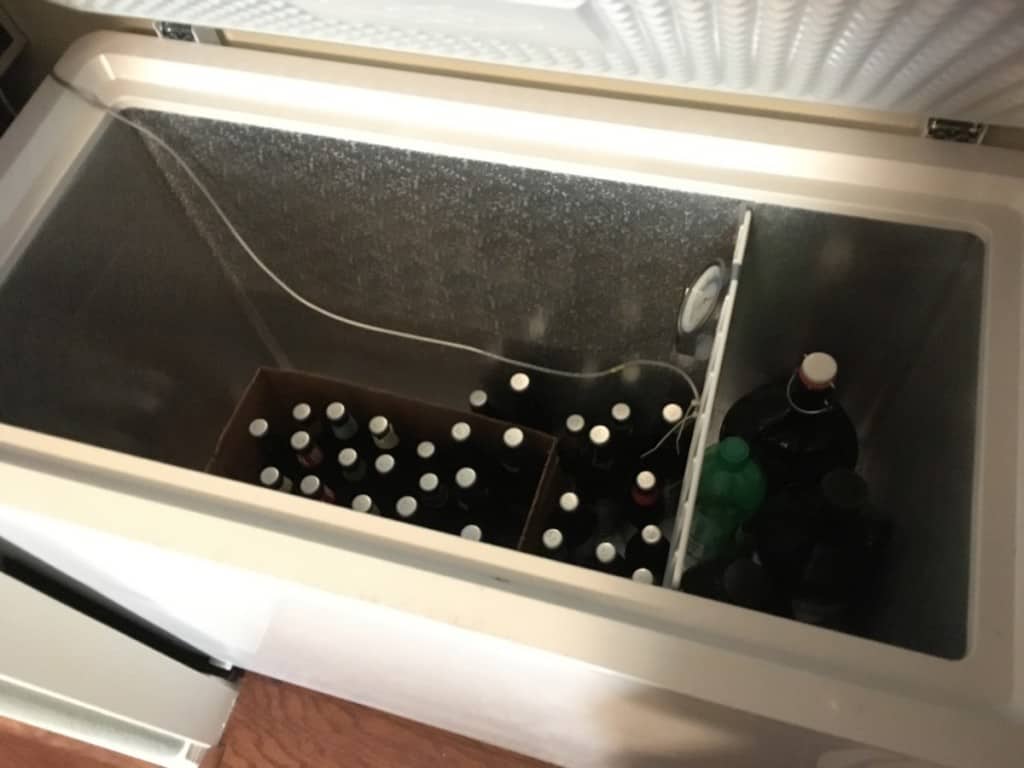
Should I ferment beer in the dark? It’s a simple question but one that some people might laugh at you for asking. When the reality is many people don’t know exactly why they do it. But, there is a reason for it and its extremely important.
Yes, fermenting beer needs to be kept in the dark. UV rays react with hop oils causing a beer to skunk. Sunlight is also detrimental to yeast respiration, which is necessary for healthy yeast. Keep fermenting beer in buckets, dark closets, or fermentation chambers to avoid sunlight.
There are a lot of nuances to fermentation in the dark and a lot of questions as to why companies store beer in clear bottles. It has given rise to a lot of unknowns and a bit of confusion. Learn how to keep your beer safe and how much sunlight is too much.
The Main Reason Beer is Fermented in the Dark
My first thought was healthy yeast is the sole reason to ferment in the dark, but I was actually wrong. Hop oils are extremely volatile and sensitive to UV light. This is the number one reason why its extremely important to ferment beer in the dark.
Beer in any state, fermenting or ready to drink should be kept out of direct sunlight. Even in as little as a half an hour a beer can become skunky and smell and taste terrible.
Now that you are good and scared your homebrew will be ruined, I’ll let you in on a little secret. Don’t stress, because indoor lights are not as strong and you have plenty of time to drink or bottle your homebrew before it skunks. Just keep the light exposure to a minimum.
How to Store a Fermenting Beer
I store my fermenting brew in a fermentation chamber. This keeps the temperature exactly where I want and protects it from the light. Its probably the best way to ferment in the dark, but there are other ways as a converted freezer or beer fridge may be a bit pricey.
- You can use an opaque bucket for fermentation.
- Put a sweater over your homebrew to both insulate and keep it in the dark. This is best to use on clear carboys.
- Keep your carboy in a dark closet.
While the single most important part of keeping your beer safe from off-flavors is keeping it in the dark, the next step is to control the temperature of your wort. So, if you do decide to brew long term its definitely a great idea to get your hands on a proper fermentation chamber.
Bittering Hops and Light Strike
light strike can happen during fermentation and after fermentation. Hops will degrade and produce 3-methyl-2-butene-1-thiol. With Thiol being the same compound that skunks use to scare off predator’s.
This compound typically happens when light hits worth and the energy is transferred to hops that have been isomerized. isomerization is the process by which alpha acids in hops are transformed into the bitter flavor that we perceive in beer.
The light strike effect only takes place in the alpha acids in beer. The beta acids do not undergo isomerization. Thus they are not effected by light strike effects the way bittering hops are.
This means that beers that have a higher quantity of bittering hops will be affected most by light strike. A good way to combat light strike problems may be to focus more on hop flavor rather than maximum IBU’s, but for those who love bitter beer you will need to be extra careful at the beach.
Control Light Exposure post Fermentation
It is important once your beer is done fermenting to control the light exposure. There are typically two ways you will store your beer, either in bottles or in a keg.
A keg is the easiest method for storage and its completely opaque. Just remember when choosing bottles, only utilize dark brown bottles. Clear or green bottles will cause your homebrew to skunk if left out in the sun.

Another way to control this better is by putting your homebrew in a can. With prices of homebrew canning machines reducing in price, it is becoming a viable option. Although it is a far more upfront cost than kegs or bottles.
Canning beer is by far a better way to protect your brew from skunking than just bottling a beer, even dark brown bottles will let some light through. However, aluminum will not.
Check out my article on bottles vs cans if you want to learn more.
If you are curious why some large conglomerates can get away with bottling their beer in clear bottles? It’s because they have specially modified hops. These hops don’t break down into the skunky compounds that typical homebrewers use.
Modified hops don’t entirely negate light exposure problems. Light exposure will still make a beer less desirable because of other chemical breakdowns.
The Affect of Light on Yeast During Fermentation
An added benefit of being a mead and beer brewer is the ability to look critically at differing functions or in this case the lack thereof. I could not for the life of me get past the fact that mead and wine makers also ferment in the dark. I wondered why that was.

To my surprise I found it difficult to find a straight answer and many brewers often stated they did get strange flavors when fermenting in light. In any case its better to not take any chances and just ferment in the dark. But, that still was not enough of an answer for me, I just had to know what was going on here.
Luckily, I found a very helpful study tucked away in the depths of the internet. It even specifically named Saccharomyces cerevisiae! Also known as brewers yeast.
This study determined that yeast was in fact impacted by direct sunlight. The respiratory response of the yeast cells was affected, causing the yeast to ineffectively take in oxygen which places stress on the yeast.
If you have been brewing for a while you know how important oxygen is for the early stages of fermentation. In fact, many brewers oxygenate their homebrew as soon as they pitch yeast.
For those of you that didn’t know, don’t worry about it too much, its more important for commercial breweries or when you are perfecting a recipe. You can make great tasting beer even without adding extra oxygen. In fact you may be adding oxygen without even knowing it.
Pro Tip: Boiling wort eliminates oxygen in the wort. But, transferring from your kettle to your carboy via gravity will introduce more oxygen.
Oxygenation of Hops and Sunlight Exposure
If you didn’t know already oxygen is bad for hops. It contributes to the wet cardboard flavor in some homebrew. This is why it is very important to create a closed system for highly hopped beers, if you don’t plan on drinking them quickly.
Since we have already explained how important it is to ferment in the dark because of hop oils breaking down into a skunky flavor and aroma, we also need to worry about excess oxygen in the wort as well.
If oxygen in the wort is not taken in by the yeast, it can remain and cause added issues to the hops in the wort. The longer the hops are in contact with the oxygen the more terrible your beer will become.
Sunlight Exposure Quantities and its Affect on Fermentation
The exposure yeast has to sunlight is not terrible, and in fact the only time where it may be the most detrimental is during the growth phase or first few days of fermentation. After that, its likely to have very little affect.
At that time the sunlight exposure to the hop acids becomes the biggest issue. But, it does make you think, what if a beer was only dry hopped and a beer was exposed to sunlight during the first few days of fermentation?
It’s actually an interesting experiment to take on, and maybe I will some day, but the theory is that since there is added yeast stress it will produce more esters.
Oddly enough, added esters are actually a feature in many beers, think of the banana and clove flavor in Hefeweizen. These esters are pronounced when the yeast is stressed, and the light exposure/oxygen deprivation could create more of these esters.
Sour Beers and Light Exposure
Sour beers are another style of beer that it is extremely important that you don’t expose to direct sunlight. The reason behind this one is not entirely because of hops though.
Sour beers utilize a bacteria that produces lactic acid to sour a beer. That bacteria is extremely sensitive to light and the UV rays will kill them. So if you are trying to make a kettle sour make sure you keep it in the dark or you may wonder why you are not getting the souring affect you are going for.
Beer Color and its Contribution to Skunking
Because it is only a specific spectrum of light that causes beers to skunk. Dark beer tends to not have as much of a problem as clearer beers do. This is why you won’t often hear about stouts being skunky. You will normally hear it from an IPA or Pale Ale.
This is not to say that dark beers won’t become skunky eventually, it will just take longer, much like the case with dark brown bottles.
